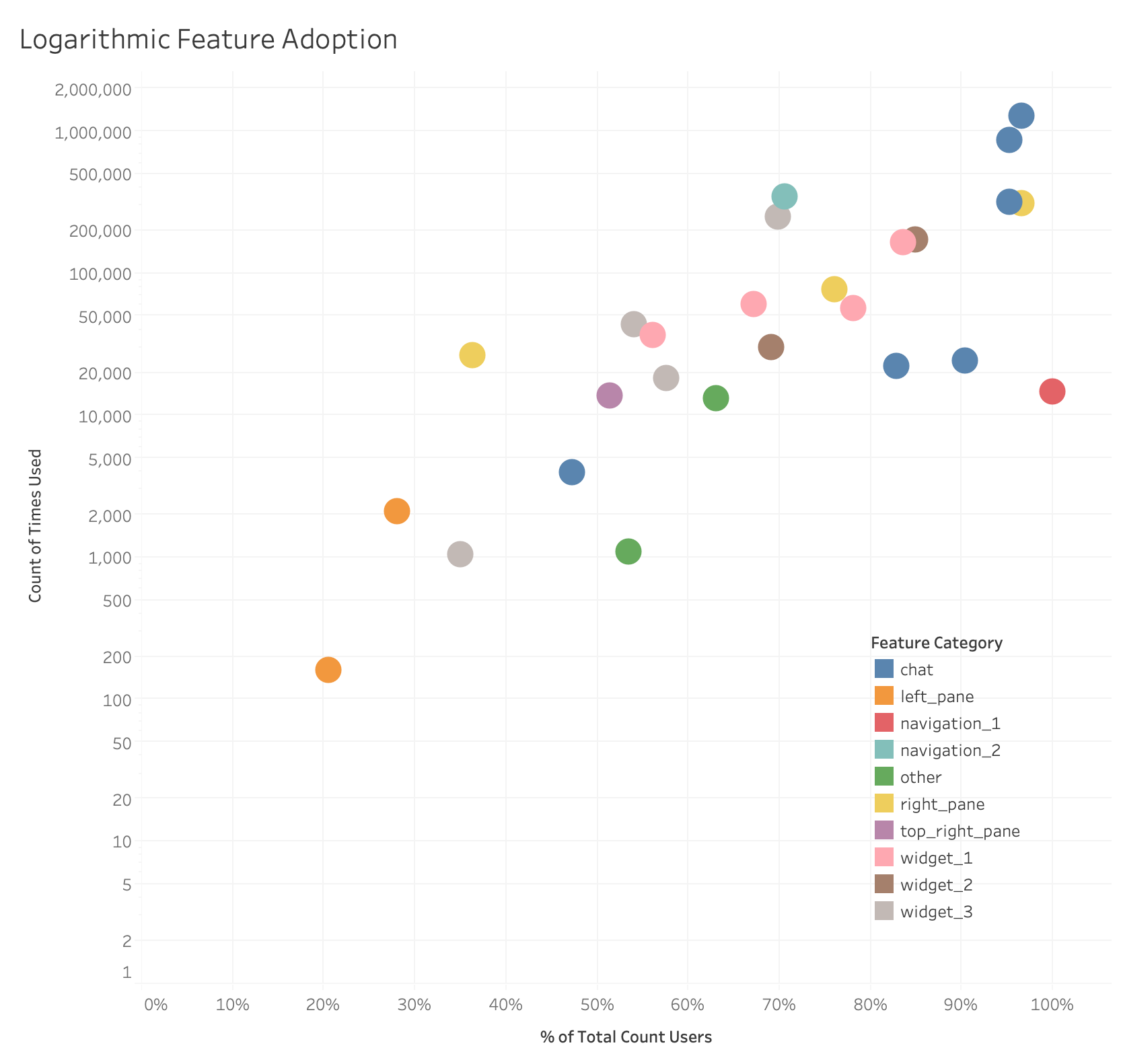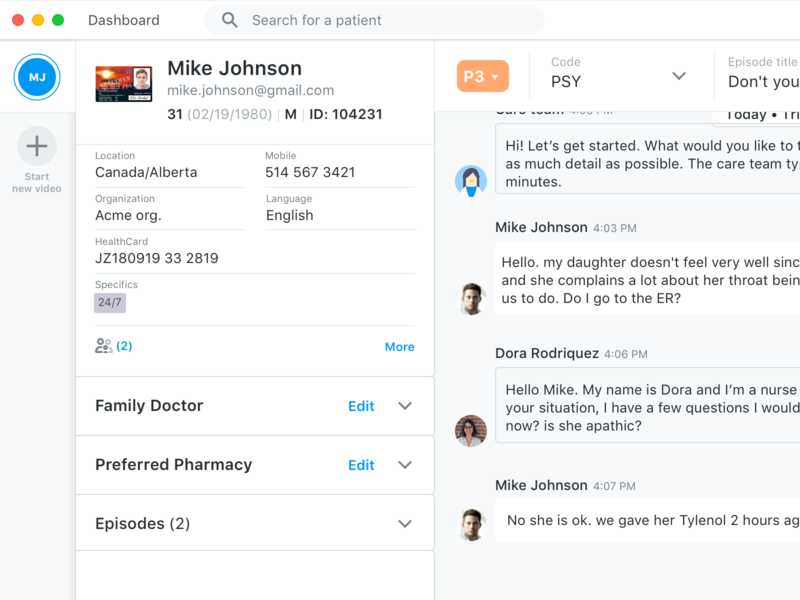Healthy companies are fueled by healthy employees. Dialogue, a virtual healthcare platform, helps businesses ensure their employees stay healthy by offering them premium healthcare options online and via a mobile app.
One of the secrets to their success has been using data to power their virtual healthcare. Behind the scenes, data scientist Jacob Frackson and his team are building the data pipelines and solutions that help Dialogue promote wellness and create care journeys.
As the company has grown, his team has helped solve two big problems with technology rather than human time: providing the best experience for patients and providing the best experience for the healthcare professionals helping those patients. Here’s how he built the data infrastructure to solve for both.
Allowing healthcare professionals to focus on care
Dialogue saves people time by helping them skip in-person consultations. In order to truly deliver on that promise, the customer support team wanted to make sure that healthcare professionals could focus their time with patients on actual care and not troubleshooting app or IT problems.
The product team identified a simple way to solve this issue: use a customer chat tool to help with non-medical or app-related issues. Once the project came to Jacob, he wanted to make sure that the chat tool could ingest the user ID, basic device information, and additional customer details in order to properly address their issue.
He made this possible by leveraging Segment with Intercom. He was able to bring user ID data into Segment and use it to inform the support rep with rich, accurate data while they were live-chatting on Intercom. With just a small amount of work, he was able to help offer real-time customer support for hundreds of tickets per week, and allow nurses and doctors to focus on medical care.
By early 2019, Dialogue had scaled operations to support over 300,000 lives. Even so, their support team was able to stay lean by leveraging technologies like Intercom and Segment to scale their processes and save them time.
Improving the caregiver and patient product experience
Over the last few years, Dialogue has hired and grown significantly. There are now over 30 developers (Jacob was the 2nd data team hire!), and the team has started shipping new products much faster.
With more products comes more complexity. Jacob now manages the data sources and pipelines for several areas, including their patient and caregiver apps. All of this added complexity has also made it more difficult for the product teams to know which features to keep, add, or modify. This meant that his team needed a solution to help the product team make data-informed decisions.
He set out to collect all product analytics in one central place to make it easier to bring together data and empower the product team with self-serve analytics. He did this by using Segment to collect all of the product data and connecting that data to their data visualization tool, Tableau.

Jacob’s view in Tableau
In Tableau, Jacob is able to report on the frequency of usage across different features. For example, each dot in the graph above is a feature plotted for frequency of use (y-axis) and adoption share (x-axis). This doesn’t just provide visibility for the team, it also helped inform critical decisions for the Dialogue team when it came to their caregiver app.
Dialogue nurses can work with hundreds of patients per day—more than most emergency rooms in the world—so they need an app that helps them focus on patient engagement over administrative tasks. Because all of Dialogue’s product analytics flow through Segment, the product team was able to identify a big opportunity to improve the usability.
Nurses primarily use the app to navigate between patient profiles, but the product team had used a lot of valuable real estate to provide other functionality. They decided to test a new navigation UI (navigation_1) that focused on keeping patient status front of mind against their existing UI (navigation_2) to decide how to move forward. In the Tableau view above, you can see that navigation_1 had been used about 15K times while navigation_2 had been used more than 300K times in the same timeframe. In 5% of the clicks, the nurses were able to do the same workload with the new UI.

Dialogue caregiver app (January 2019 version)
The old navigation was not optimized for the right use cases and, as a result, only 70% of the care team used it. By contrast, the new navigation once fully rolled out was used by 99% of users—an almost 30% improvement—and often saved healthcare professionals multiple clicks in the process.
Staffing nurses in real-time
As mentioned before, Dialogue cares a lot about how long it takes for a patient to receive care or have an issue resolved. However, this success metric becomes difficult when any onboarding customer might add hundreds to thousands of new patients to their app all at the same time. This reality led to busy and busier days, where short-staffed caregiver teams sometimes created longer wait times.
Their original way of piping patient volume data to their database had a 12-hour latency. This meant that by the time they had the right data, it was too late to make any staffing improvements. They replaced this solution by using Segment to track visit volume and ingest Amazon Kinesis data streams to create real-time dashboards of patient visits in Amazon Athena with less than three-minutes delay.
Their new real-time dashboard meant that Dialogue could quickly identify spikes in patient volumes and recruit extra doctors on-call to avoid any increase in wait times.
Powering care with data
By using data to power tools like Intercom and Amazon Kinesis, as well as data-informed decisions for the product team, Dialogue has been able to truly deliver on both a great caregiver and patient experience. They have:
-
Cared for 300K+ users with a technology enabled support processes
-
Helped the product team unify and self-serve product analytics
-
Improved caregiver app adoption by 30% using A/B test insights
-
Created real-time nurse staffing models with less than three-minute latency
With much more growth ahead, Jacob is excited to continue to tackle the data complexities that come with it and deliver world-class experiences to their customers.

The State of Personalization 2023
Our annual look at how attitudes, preferences, and experiences with personalization have evolved over the past year.